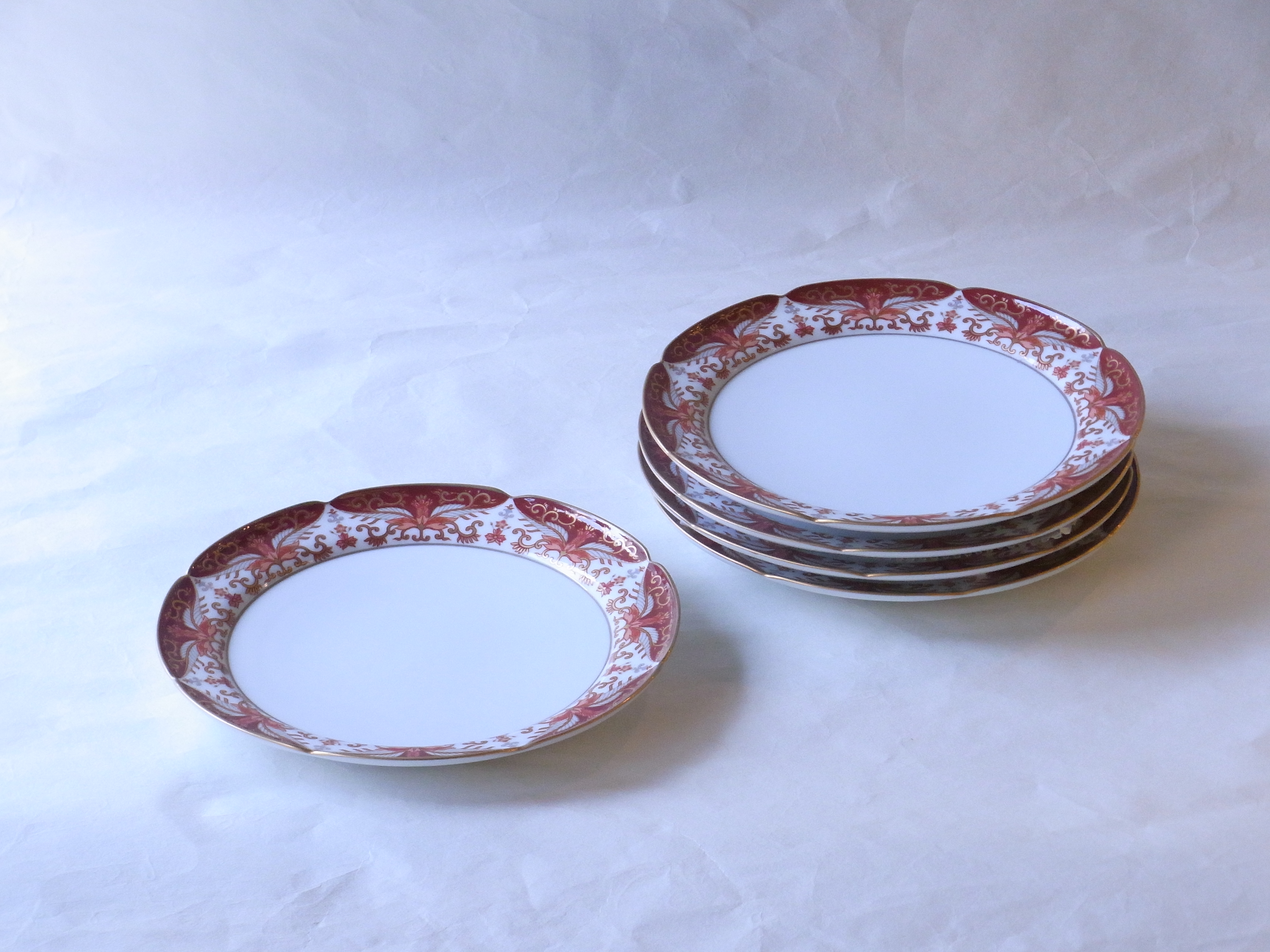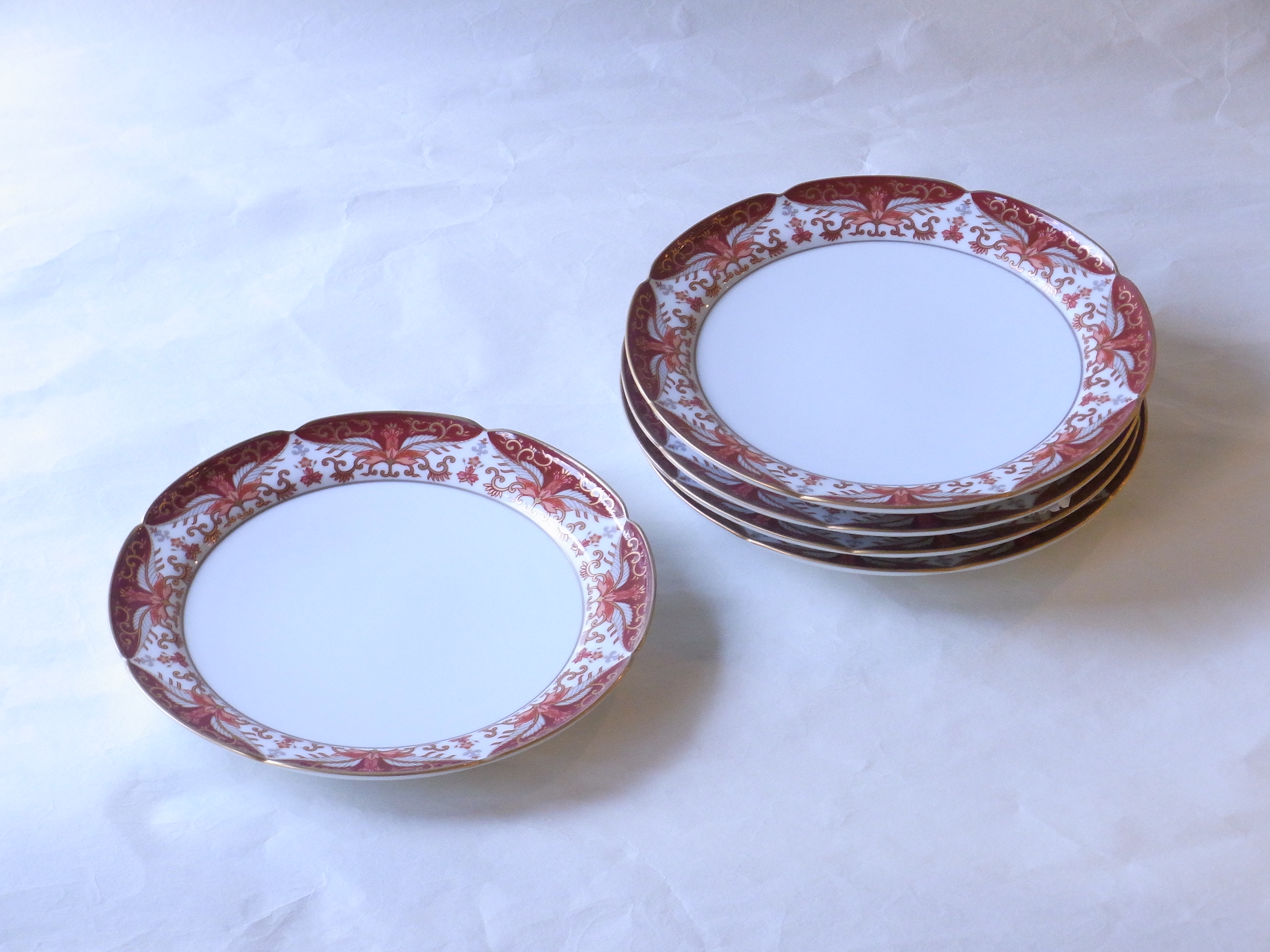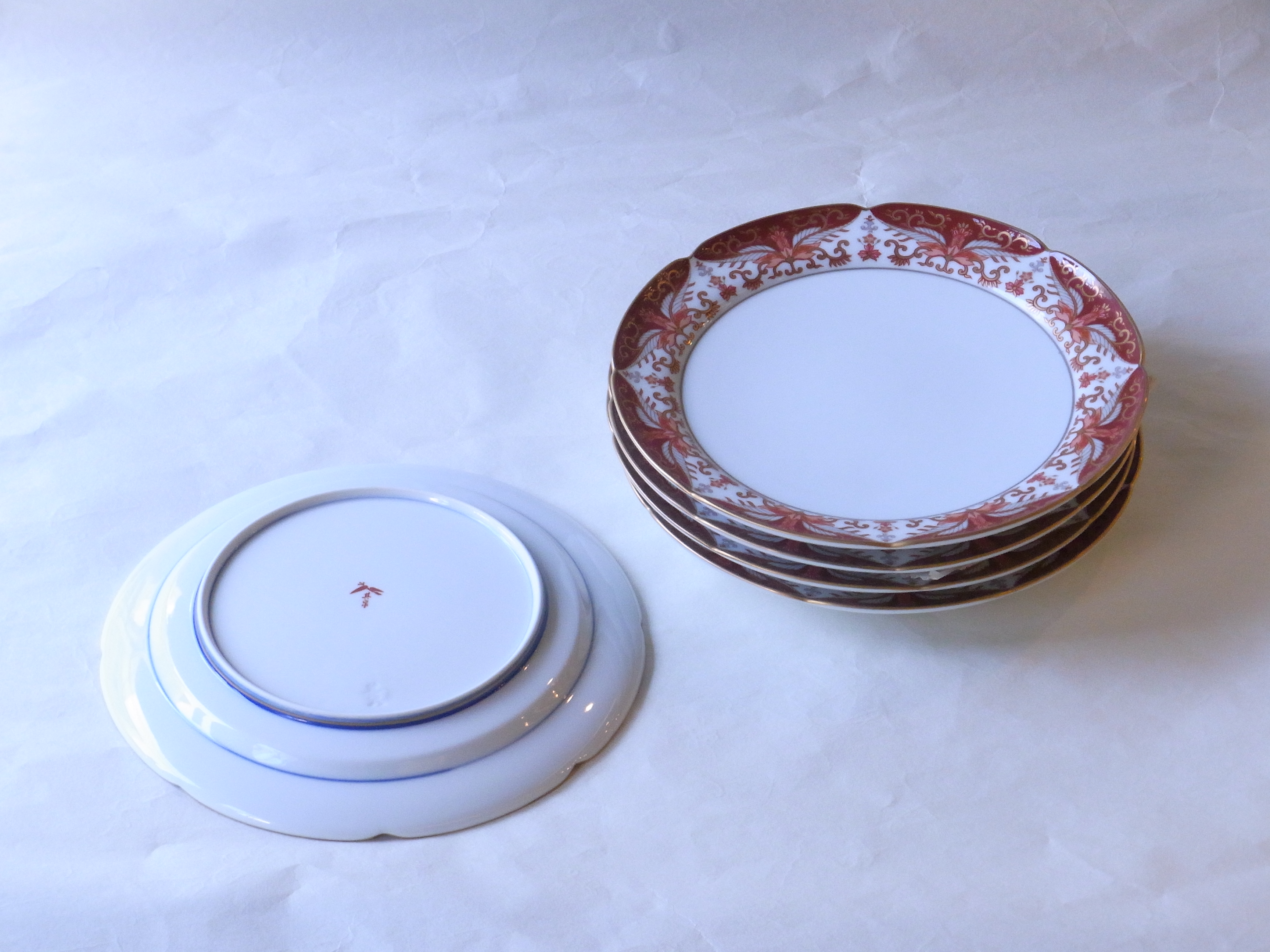明治時代初期の日本の古き良き時代を思わせる、有田で焼いた
和製の洋陶磁器の復刻版です。
明治初期の有田の陶工たちは高級洋陶器のづくりに挑戦しました。
当時生まれたのが、朱赤の線の上に朱の液で色付けしたこの「赤濃金彩唐草」です。
濃(だみ)とは、呉須(ごす)で素地に絵付け(染付け)をする場合
線描きを施してから、その中を太い筆で呉須の溶液を溜めながら塗る技法をいいます。
染付のように呉須だけで成立している、有田焼は数多くありますが
この器のように朱赤だけで、濃(だみ)を施した例は、珍しくとても貴重です。
西洋への憧憬が生み出した、日本独自の技法で作られた器は
洋食器でも和陶器でもない、まばゆいほどの気品を兼ね備えた
日本独自の分野の器として、色褪せることなく輝き続けています。
このお皿は、西洋ではディナー皿よりも小さく、ケーキ皿よりも少し大きいサイズ、
日本では、取り皿よりも一回り大きいので、ハムエッグやパン皿、サラダの皿や
デザートの皿に適したサイズなので、様々な用途にお使い頂けます。
日本の技法で日本の職人が作った洋食器は、
和と洋の融合といえるのかもしれません。
お正月やクリスマスやホームパーティーなど
その他何かのイベントの際にも使える、おしゃれな器です。
径 21㎝ 高さ 2.5㎝
Baked in Arita, reminiscent of the good old days of Japan in the early Meiji era
It is a reprint of Japanese ceramics.
In the early Meiji era, arita pottery workers tried to make high-quality Western ceramics.
It was born at that time, this “Akabane gold colored karakusa” colored with the liquid of vermilion on the line of red.
When painting on the base with Kuresu
It is a technique of applying a line drawing and then painting it while accumulating a solution of Kuresu with a thick brush.
Arita ware which is approved only by Kuresu like the dye is a lot
The example of applying only vermilion only like this container, and applying the dark (dami) is unusual and very valuable.
The vessel made by the technique of japan original that the longing for the West created
It is neither western ware nor Japanese pottery, and has the elegance of dazzling.
As a vessel of japan’s unique field, it continues to shine without fading.
This dish is smaller than the dinner dish in the West, a little bigger than the cake dish,
In Japan, it’s bigger than a saucer, so it’s a lot of ham eggs, bread dishes, salad dishes,
Because it is the size suitable for the dish of the dessert, it can be used for various purposes.
Western dishes made by Japanese craftsmen in Japanese techniques
It may be said that it is a fusion of Japanese and Western.
New Year’s, Christmas, home parties, etc.
It is a stylish container that can be used for the event of something else.
在阿裡塔烤,讓人想起明治時代早期日本的美好時光
它是日本西式陶瓷的重印版。
明治初期,阿裡塔的陶工們挑戰了生產高檔西式陶器。
當時誕生的是”紅金彩唐草”,在紅線上用栗液著色。
當在蘇蘇(蘇)的地面上繪畫(染色)時,暗的(大米)是
在進行線條繪製後,用厚刷子填充蘇的溶液的技術。
有很多阿裡塔陶器,只通過蘇蘇,如染色
只有紅色和深紅色的例子,如這個容器,是罕見的,非常有價值。
由對西方的渴望創造的日本專有技術的儀器
既不是西式或日本陶器,它結合了令人眼花繚亂的優雅
作為日本獨特的領域,它繼續閃耀,沒有褪色。
這個盤子比西方的晚餐盤小一點,比蛋糕盤大一點,
在日本,它比盤子大一點,所以火腿和雞蛋、麵包盤、沙拉盤和
因為它的大小適合甜點盤,它可用於各種應用。
日本工匠用日本技術製作的西式樂器
可以說,日本和西方的融合。
新年、耶誕節、家庭聚會等
這是一個時尚的容器,可用於任何其他事件。
在阿里塔烤,让人想起明治时代早期日本的美好时光
它是日本西式陶瓷的重印版。
明治初期,阿里塔的陶工们挑战了生产高档西式陶器。
当时诞生的是”红金彩唐草”,在红线上用栗液着色。
当在苏苏(苏)的地面上绘画(染色)时,暗的(大米)是
在进行线条绘制后,用厚刷子填充苏的溶液的技术。
有很多阿里塔陶器,只通过苏苏,如染色
只有红色和深红色的例子,如这个容器,是罕见的,非常有价值。
由对西方的渴望创造的日本专有技术的仪器
既不是西式或日本陶器,它结合了令人眼花缭乱的优雅
作为日本独特的领域,它继续闪耀,没有褪色。
这个盘子比西方的晚餐盘小一点,比蛋糕盘大一点,
在日本,它比盘子大一点,所以火腿和鸡蛋、面包盘、沙拉盘和
因为它的大小适合甜点盘,它可用于各种应用。
日本工匠用日本技术制作的西式乐器
可以说,日本和西方的融合。
新年、圣诞节、家庭聚会等
这是一个时尚的容器,可用于任何其他事件。


